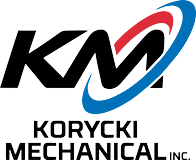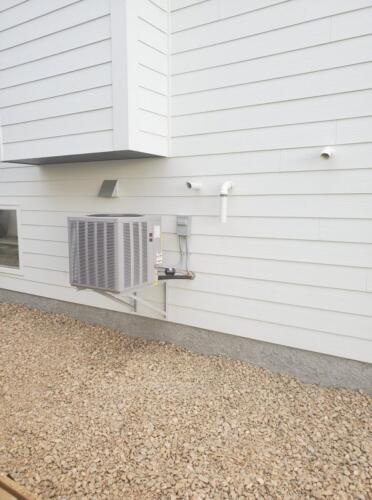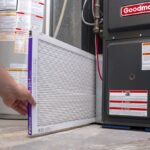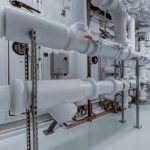As the temperatures increase in the spring and summer, you’ll need to understand your home’s air conditioning system. Understanding what components to look for if you hear strange noises or have general problems is essential for keeping things (including your head) cool throughout summer.
The thermostat, air blowing unit, air filter evaporator, condenser coil, and compressor are the six major air conditioning components that homeowners should be aware of.
- Compressor
The compressor, considered to be the most important of all air conditioner components, is the system’s engine. The exterior unit contains the compressor for central and split systems.
The major energy user for an air conditioner is the compressor, which is frequently the most expensive part of the system. The compressor’s job is to turn the refrigerant, which was a heated vapour when it entered the device, into a hot compressed liquid, as its name suggests.
Then, when the air conditioning system continues to remove heat from the inside air, this is cooled and expanded once again. By routinely checking for refrigerant leaks, avoiding dirt & contamination, keeping the condenser coils clean, and maintaining your AC well-oiled, you can maintain the health of the most crucial AC component.
- Condenser Coil
The evaporator’s opposite, the condenser coil, removes heat from the refrigerant and releases it into the atmosphere outside. It may be found in your air conditioner’s outside unit.
With a fan pushing heat away from it, the evaporator coil operates efficiently in the opposite direction from the condenser. This is the heat being released by the condenser when the refrigerant transitions from a hot vapour to a hot liquid.
- Evaporator
In contrast to the air handler in a central air conditioning system, the evaporator coil is located in the inner unit of a mini-split air conditioner. Just before approaching the evaporator coils, the refrigerant, which is now flowing through the system, is cooled to a low temperature.
To remove heat and cool the air, your HVAC system pulls warm air from your home and blows it over cool evaporator coils. The cold air is then circulated within your house by fans that are situated behind the evaporator coil, lowering the temperature.
These coils can also be constructed of steel or aluminum but are often made of copper. Copper is the preferred material due to its greater heat conductivity, the convenience of usage, and ease of maintenance.
However, it’s important to keep your coils clean since with time, dirt and dust can accumulate on them and decrease their effectiveness. Additionally, a buildup of this dust may obstruct the condensation drain, leading to refrigerant leakage.
Your evaporator coils will remain in optimum condition with yearly cleaning, even though the air filter protects them.
- Thermostat
Your ideal interior temperature is maintained by the thermostat. When you do this, your air conditioner will respond by turning on or off the air conditioner to maintain the correct interior temperature.
It can quickly determine the temperature of your space thanks to built-in temperature and humidity sensors. With programmable or smart thermostats, you can set clever instructions like scheduling or geofencing and manage your AC temperature from your phone.
You may utilize a smart AC controller, which functions similarly to a thermostat for central systems if you have a ducted air conditioner like a mini-split or window unit.
- Air filter
The air handler unit of the air conditioner is often where you’ll find the air filter. The filter captures dirt, dust, and other tiny particles to safeguard the air conditioner’s internal components and enhance indoor air quality.
As a blocked filter can cause additional wear and tear on your equipment, it’s crucial to replace your air filter according to the suggested timetable.
- Blower
The blower circulates air over the evaporator, where it is cooled, as part of the air handler equipment. The cooled air is then distributed throughout the home by the blower through the ducting.
- Refrigerant
The material itself is what truly cools. It circulates inside the air conditioner through a system of copper or steel tubes and possesses certain qualities that allow it to be compressed and expanded to cool or heat a space.
R-410A and R-22 are two popular refrigerants, albeit R-22 is steadily losing use.
Common Problems With Air Conditioner Components
Even though we would all like it to, mechanical equipment does not always like to continue working flawlessly all the time. Components of air conditioners occasionally have issues that might result in subpar performance or complete failure of the AC.
These issues may take many forms. Typical examples include:
- AC is emitting a smell.
- clogged air filter
- Leakage of water from the interior unit
- A refrigerant issue is the cause of the AC not blowing cold air.
- sounds from the AC
In addition to the inconvenience they cause, these concerns may cause your home’s energy expenditures to rise. Therefore, it is preferable to get them rectified as soon as possible by a trained expert.
You ought to be better able to comprehend how your air conditioner operates now that you are more knowledgeable about its parts. Additionally, you are now in a better position to identify any possible AC issues and determine when a tune-up is necessary. In the end, information is power!
Now you’ll be better equipped to pinpoint the cause if you feel your AC is having a problem. Of course, call the friendly staff at Korycki Mechanical Inc immediately if you have any significant issues with your cooling system.
We can assist with any air conditioning, upkeep or repairs that you require.




